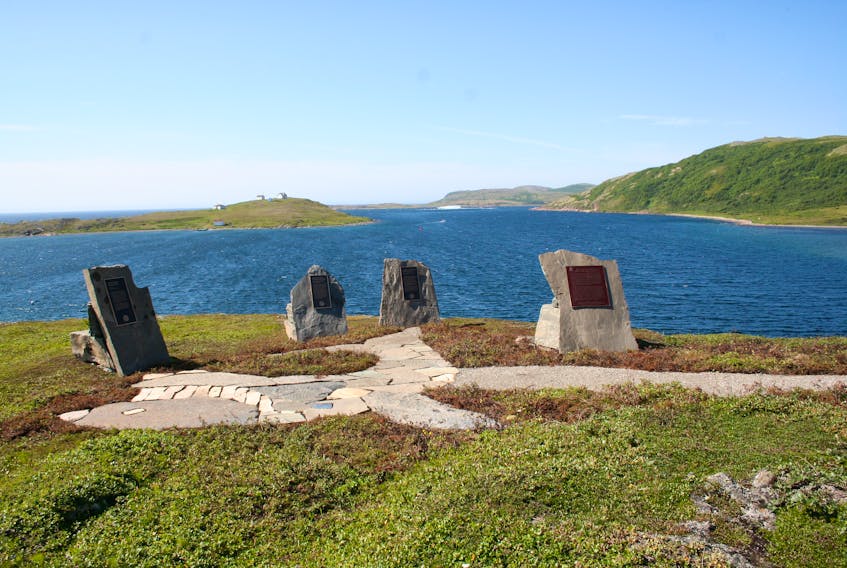RED BAY, N.L.
It’ll cost a bit more to visit Red Bay National Historic Site in 2020.
Parks Canada admission fees are based on the number of hours a visitor would typically spend on-site and the level of service provided to visitors, including the availability and variety of visitor programs, services, and facilities.
In recent years, Red Bay National Historic Site has significantly increased its visitor offerings, through the addition of new initiatives such as the Xplorers program for children; a fun geocache activity shared with other national historic sites in Newfoundland and Labrador; and recent investments in the renovated visitor centre.
Parks Canada says Red Bay National Historic Site’s admission fees will be adjusted “to reflect this added value” beginning Jan. 1, 2020.
The new daily admission price will be $11.96 for adults and $10.27 for seniors.
In addition, a minor adjustment of 2.2 per cent to fees within Red Bay National Historic Site will also take effect on Jan. 1, 2020. In accordance with the Government of Canada Service Fees Act, the Agency will be adjusting user fees based on the Consumer Price Index (CPI) at national parks, historic sites, and marine conservation areas across the country.
Parks Canada’s fees were last adjusted in 2008 and since then it was noted in a Parks Canada media release that operational costs have increased significantly.
“These small adjustments will allow Parks Canada to offer visitors even better opportunities to experience Red Bay National Historic Site and learn about our environment and history,” it was stated in the release.
It was also noted that “all revenues from fees collected at Red Bay National Historic Site are retained and reinvested within the historic site and used to support visitor programs, services, and facilities, and engage visitors in conservation efforts. Parks Canada is committed to ensuring that visitor experiences are affordable for all Canadians. Visitor fees never exceed the costs of delivering the service to visitors, they only ever recover costs, keeping experiences affordable.”
“Visitor fees play a vital role in Parks Canada’s ability to allow Canadians to experience our national parks, historic sites, and marine conservation areas,” said Michael Nadler, acting chief executive officer, Parks Canada. “Visitor fees are reinvested directly where they are collected, which means that every time you visit Red Bay National Historic Site you are investing in its future.
“The fee adjustments announced today (Jan. 18) will ensure that Parks Canada can continue to deliver exceptional visitor experiences at Red Bay National Historic Site and that Canadians can continue to enjoy and protect this treasured place for generations to come.”
The Agency is communicating these Jan. 1, 2020 adjustments now to ensure that visitors and those that work in tourism can plan well in advance.
Parks Canada facts:
• Parks Canada places are an important part of local economies, helping to generate over $4 billion and indirectly employ over 40,000 people annually.
• Parks Canada's budget is 80 per cent funded from government tax-based appropriations and 20 per cent from user fees. Tax dollars are primarily used to create and preserve national parks, historic sites, and marine conservation areas, as well as historic canals, since their protection benefits all Canadians. Visitors pay fees to help offset the costs of the services and facilities at Parks Canada’s places since they personally benefit from them.
· Visitor fees are reinvested in the maintenance of visitor facilities and transportation infrastructure, development of on-site signage, maps and exhibits, delivery of visitor programs, visitor safety, and marketing, communication, and trip planning support for visitors.
· The Government of Canada Service Fees Act was adopted in June 2017 to encourage greater flexibility, transparency, and cost-recovery for federal government service fees and ensure that personal benefit services are not over-subsidized.
· Admission will remain free for youth 17 and under to allow them to experience the outdoors and learn about our natural and cultural heritage.
· There will be no changes to visitor fees in 2019.
· In 2013, Red Bay National Historic Site, the most complete example of early industrial-scale whaling in the world, was inscribed on UNESCO’s World Heritage List for its outstanding universal value. During the mid-16th century, large numbers of right and bowhead whales drew whalers from the Basque region of Spain and France to the Strait of Belle Isle, where they established a major whaling port at Red Bay. For some 70 years, Basque whalers made the dangerous, month-long journey across the Atlantic to hunt whales and produce the oil that lit the lamps of Europe.
Source: Parks Canada
Associated links:
http://Red Bay National Historic Site
http://Parks Canada Website - Fee Adjustments Government of Canada Service Fees Act









